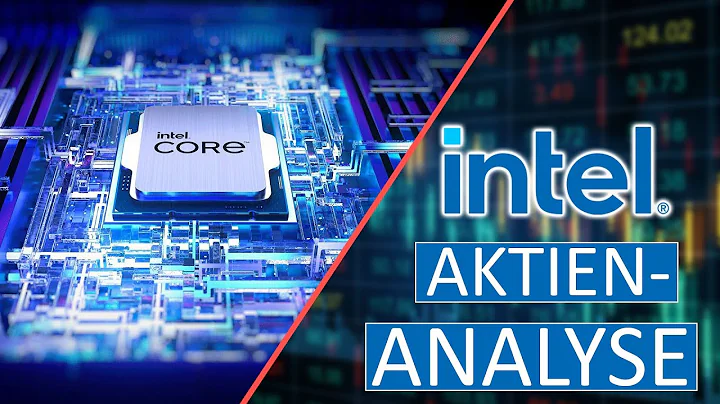Demystifying the BIOS: Everything You Need to Know
Table of Contents
- Introduction to BIOS
- The Function of BIOS
- Types of BIOS: Legacy BIOS vs UEFI BIOS
- Understanding the Basic Input Output System
- Components and Configuration of a BIOS
- 5.1. Firmware and Flash Memory
- 5.2. Main BIOS Configuration
- 5.3. Backup BIOS Configuration
- 5.4. Upgrading the BIOS
- Power-On Self-Test (POST)
- Legacy BIOS: Features and Limitations
- UEFI BIOS: Advancements and Benefits
- Navigating a UEFI BIOS Interface
- 9.1. System Information
- 9.2. Date and Time Configuration
- 9.3. Diagnostics and Troubleshooting
- 9.4. Security Settings
- 9.5. Advanced Boot Options
- 9.6. UEFI Drivers
- Conclusion
Understanding the Basic Input Output System
The Basic Input Output System (BIOS) is an integral part of the computer that plays a crucial role in the boot-up process. When you power on your computer, the BIOS initiates the loading of the operating system. Acting as the firmware of the system, the BIOS helps initialize the memory and CPU, perform self-tests, and facilitate the startup of the operating system.
1. Introduction to BIOS
The BIOS, short for Basic Input Output System, is the software responsible for starting up your computer when you press the power button. It is often referred to as the firmware of the system and is stored in flash memory. In this article, we will explore the functions, types, and configurations of the BIOS.
2. The Function of BIOS
The primary function of the BIOS is to initialize the essential hardware components of the computer and execute the necessary code to start the operating system. It performs a power-on self-test (POST) to check the presence of components like memory, CPU, video, and input devices such as a keyboard and mouse. Once the POST is successfully completed, the BIOS identifies the boot drive and looks for a boot loader to initiate the operating system.
3. Types of BIOS: Legacy BIOS vs UEFI BIOS
There are two main types of BIOS: the legacy BIOS and the UEFI BIOS. The legacy BIOS, which has been around for about 25 years, is text-based and has limited capabilities for configuration and upgrade. On the other HAND, the UEFI (Unified Extensible Firmware Interface) BIOS is a newer, standardized form of BIOS that offers enhanced features and cross-manufacturer compatibility.
4. Understanding the Basic Input Output System
The BIOS serves as the intermediary between the hardware and the operating system. It is responsible for initializing the essential components of the computer, including the memory and CPU. The BIOS also performs a power-on self-test (POST), which checks the presence and functionality of crucial hardware components. Once the POST is completed, the BIOS looks for a boot loader to start the operating system.
5. Components and Configuration of a BIOS
The BIOS consists of various components and configurations that allow for proper system initialization and customization. These include firmware and flash memory, main and backup BIOS configurations, and the ability to upgrade the BIOS. These features ensure the stability and functionality of the computer's startup process.
5.1. Firmware and Flash Memory
The BIOS is stored in flash memory, which can typically be found on the computer's motherboard. In modern computers, flash memory is used instead of Read Only Memory (ROM) for storing BIOS data. This enables manufacturers to update and customize the BIOS easily.
5.2. Main BIOS Configuration
A computer motherboard often contains a main BIOS configuration. This configuration holds the primary set of BIOS settings and can be modified by the user. It allows for customization of various system parameters, such as boot order, overclocking options, and hardware settings.
5.3. Backup BIOS Configuration
In addition to the main BIOS configuration, some motherboards feature a backup BIOS configuration. This backup configuration serves as a fail-safe mechanism in case the main BIOS becomes corrupted or unusable. It allows users to revert back to a previous version of the BIOS if necessary.
5.4. Upgrading the BIOS
With the advent of flash memory, upgrading the BIOS has become much simpler. Manufacturers release BIOS updates periodically to improve stability, compatibility, and performance. Upgrading the BIOS can be done through specific software provided by the motherboard manufacturer.
6. Power-On Self-Test (POST)
The Power-On Self-Test, or POST, is a crucial step performed by the BIOS during startup. It checks the presence and integrity of essential hardware components, such as the memory, CPU, video system, and input devices. The POST ensures that the computer is in a functional state before initiating the booting process.
7. Legacy BIOS: Features and Limitations
The legacy BIOS, prevalent in older computers, is a text-based interface that provides basic configuration options. While it served its purpose well for many years, it has its limitations. The legacy BIOS lacks the ability to add additional drivers or enhance its capabilities easily. However, it can still interact with older operating systems and perform simple configuration changes.
8. UEFI BIOS: Advancements and Benefits
The UEFI BIOS, short for Unified Extensible Firmware Interface, represents a significant advancement in BIOS technology. It offers a comprehensive graphical interface for customization and configuration. The UEFI BIOS allows manufacturers to create a standardized BIOS with consistent features and capabilities across different systems. It provides a more user-friendly experience and enables the installation of additional drivers for expanded hardware compatibility.
9. Navigating a UEFI BIOS Interface
The UEFI BIOS interface offers several categories and options for system configuration. Let's explore some of the essential sections available in a typical UEFI BIOS.
9.1. System Information
The System Information section provides detailed information about the computer, including its hardware configuration, serial numbers, and installed components.
9.2. Date and Time Configuration
In the Date and Time configuration settings, users can view and modify the date and time settings of the computer. It is essential to keep the system time accurate for synchronization with external devices and software.
9.3. Diagnostics and Troubleshooting
The UEFI BIOS includes built-in diagnostics and troubleshooting tools. These tools allow users to perform various tests to identify and resolve hardware issues and validate system functionality.
9.4. Security Settings
The Security settings category enables users to enhance system security by setting up passwords for user accounts and administrative access. This helps protect the computer from unauthorized access.
9.5. Advanced Boot Options
System boot options can be customized in the Advanced tab of the UEFI BIOS. Users can modify the boot order, select the primary operating system, and configure options related to secure boot.
9.6. UEFI Drivers
UEFI drivers provide additional hardware support and compatibility. Users can install UEFI-specific drivers to enable the computer to interact with different components, such as network interface cards and storage devices.
10. Conclusion
The BIOS is a critical component of every computer, responsible for initializing hardware and starting the operating system. Understanding different aspects of the BIOS, such as its functions, types, and configurations, can help users navigate the boot process and customize their systems effectively. From legacy BIOS to UEFI BIOS, advancements in firmware technology have enhanced system compatibility, customization, and security.
Highlights
- The BIOS (Basic Input Output System) is the firmware that starts up a computer when the power button is pressed.
- There are two main types of BIOS: legacy BIOS (text-based) and UEFI BIOS (graphical interface).
- The BIOS performs a power-on self-test (POST) to check the presence and functionality of hardware components.
- Legacy BIOS has limited configuration options, while UEFI BIOS offers enhanced customization and compatibility.
- UEFI BIOS allows for the installation of additional drivers and provides a standardized interface across different manufacturers’ systems.
FAQ
Q: What is the difference between legacy BIOS and UEFI BIOS?
A: Legacy BIOS is a text-based interface with limited configuration options, while UEFI BIOS offers a graphical interface and advanced customization features. UEFI BIOS is also more standardized across different manufacturers' systems.
Q: Can I upgrade the BIOS on my computer?
A: Yes, it is possible to upgrade the BIOS on your computer. Manufacturers release BIOS updates periodically to improve features, compatibility, and performance. However, it is important to follow the instructions provided by the motherboard manufacturer carefully.
Q: What is the purpose of the POST (Power-On Self-Test)?
A: The POST is performed by the BIOS during startup to check the presence and integrity of essential hardware components. It ensures that the computer is in a functional state before initiating the boot process.
Q: How can I access and navigate the UEFI BIOS interface?
A: Accessing the UEFI BIOS interface varies depending on the manufacturer, but it is typically done by pressing a specific key during the computer's startup process. Once in the interface, you can navigate using the provided graphical menus and options.
Q: What are UEFI drivers?
A: UEFI drivers are specific drivers that can be installed in the UEFI BIOS to provide additional hardware support and compatibility. These drivers enable the computer to interact with various components, such as network interface cards and storage devices.
Resources
 WHY YOU SHOULD CHOOSE TOOLIFY
WHY YOU SHOULD CHOOSE TOOLIFY

























